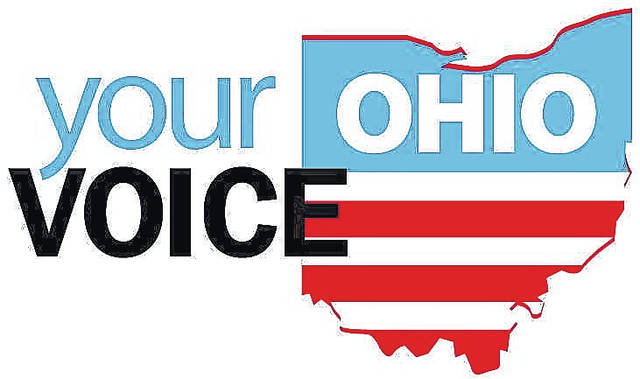
Governors in the United States have the ability to declare an official state of emergency in the face of events such as natural disasters or disease outbreaks. According to the Ohio Emergency Management Agency, these state responses to an official emergency may include grants, conducting and supporting investigations into the cause, treatment, prevention of disease, and temporary reassignment of state and local personnel.
Because of the loss of life and strain on local resources caused by the opioid crisis, many people in Ohio are advocating for the opioid crisis to be declared as an official state emergency. Eight other states have already taken this path. But this plan of action is controversial and can be confusing–the White House declared the crisis a national public health emergency last fall. While that kind of declaration only lasts 90 days, the order was extended in January and again in April. This week’s blog explores what these different emergency declarations mean, and how they differ in their approach to confront the crisis.
The Opioid Crisis as a Nationwide Emergency
In October 2017, President Trump instructed the Department of Health and Human Services to declare the opioid crisis a “Public Health Emergency”, reports the Scientific American. This differs from a “national emergency”, and here’s what it aims to do:
Telemedicine: allows individuals in rural areas to be remotely prescribed treatment for substance use disorders or mental health.
Personnel: the HHS can make temporary appointments to help deal with the crisis
Grants: the Department of Labor will issue “dislocated worker grants” to people who can’t work due to the crisis.
HIV/AIDS: the administration committed resources to those with HIV/AIDS and a substance use disorder.
What it doesn’t do:
Address the “16 bed rule”, which restricts using Medicaid to be treated at a mental health or substance-use treatment center that has more than 16 beds.
Increase access to Naloxone
Address patient privacy concerns. Many had hoped it would increase overdose and treatment data between doctors, patients, and their families.
National Emergency vs. Public Health Emergency
At first, this change in wording may not seem like a huge difference, but these two declarations mean two entirely different things–especially when it comes to funding. The declaration of the opioid crisis as a public health emergency only allows funding from the Public Health Emergency Fund, which had around $57,000 in October, WYSO reports. Meanwhile, Ohio is spending as much as $8.8 billion a year fighting the crisis, and is still falling short–a study by Ohio State found only 20-40% of people who struggle with substance use are getting treatment.
Likewise, the declaration wasn’t received well by some residents in Ohio, including officials in Ross County, who had hoped for more robust funding. Their childcare budget nearly doubled in past five years to almost $2.4 million, which has put a huge stress on finances. That’s not to mention the need for funding to support treatment centers, the county jail, and education efforts.
While Ohio may not have received a huge amount of funds from the declaration, the White House did address the opioid crisis in the official 2019 budget. According to the official document, the budget requests “more than $30 billion in drug control funding in 2019” to focus on “prevention, treatment, interdiction, international operations, and law enforcement”. But according to NPR, those dollars aren’t flowing just yet, leaving states in a tough spot.
Emergency Declarations in Other States
Eight states have declared an official emergency to address the opioid crisis–this includes South Carolina, Pennsylvania, Arizona, Florida, Maryland, Alaska, Virginia, and Massachusetts. But these declarations are still a long, uphill battle. According to the Morning Call, “cutting red tape and improving agency collaboration are only the first steps” in getting the crisis under control. The effects may not be immediately tangible. Maryland declared an emergency on March 1st, but deaths have continued to rise.
On the other hand, Alaska has had an emergency declaration in place for almost a year and is starting to see results. Regional overdose response programs have been created, trainings have been administered, and they have distributed over 8,000 naloxone kits and revived at least 100 people.
Declaring a State Emergency in Ohio
So, what’s stopping Ohio from declaring a statewide emergency? Current Governor John Kasich has faced pressure from all sides to take this step. However, the governor has rejected these calls, reports the Columbus Dispatch, saying he doesn’t have the authority to do so.
It’s key to note that Governor Kasich has declared state of emergencies a few different times throughout his time in office. For instance, in 2012, following severe storms and power outages across the state, an emergency was declared, and “state agencies were authorized to take any necessary action” to assist local governments to help cleanup and recovery efforts. However, he may not see the opioid crisis as falling under the umbrella of an “official emergency”, which in past have addressed extreme weather events or outbreaks.
But according to the Association of State and Territorial Health Officials, declaring the opioid epidemic a public health emergency is starting to become more normal: “the growing trend of invoking emergency powers for opioids highlights the actions states are willing to take in response to an increasing number of overdose deaths. As more states leverage their emergency authorities to address opioids, the sophistication and creativity of using such powers is emerging.”
We’ll likely see this issue come up again before election season–as the AP reports, democratic gubernatorial candidate Richard Cordray said he would “immediately” declare a state emergency in order to “better fund social services programs” to address the program.
Do you think the governor should declare an official state emergency? Let us know below. To follow our new research and research of our local media partners, sign up for our weekly news roundup.
Your Voice Ohio is a collaboration by Ohio news media — including the Wilmington News Journal — driven by the perspectives and priorities of all Ohioans.


